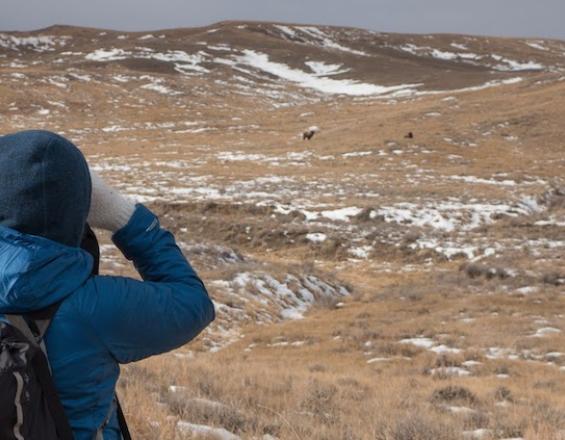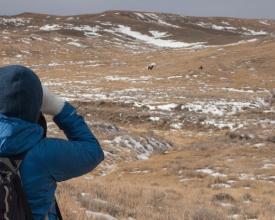Collecte de données sur la faune et la flore grâce à des citoyens scientifiques bénévoles
Solution instantanée

Un bénévole de Landmark observe la prairie pendant une brève pause lors de la collecte de données sur la faune et la flore. Réserve de prairie américaine
La Réserve américaine des prairies s'est lancée dans un voyage de plusieurs années avec les Aventuriers et scientifiques pour la conservation (ASC) dans le cadre de Landmark, un programme de science citoyenne. Landmark vise à collecter des données clés sur la faune et la flore, à créer un groupe d'intérêt mondial pour cet écosystème et à enregistrer l'expérience humaine de la vie dans la prairie. ASC dirige Landmark, en recrutant et en formant des équipes de bénévoles qui vivent dans la réserve pendant deux mois et collectent des données tout au long de l'année à l'aide d'une tablette électronique.
Dernière modification 02 Oct 2020
2401 Vues
Contexte
Défis à relever
Emplacement
American Prairie Reserve Hq, Malta, MT, États-Unis
Amérique du Nord
Impacts
L'ASC recueille des données tout au long de l'année, explorant les prairies depuis les températures négatives de janvier jusqu'aux chaleurs de juillet et août. Les données recueillies sont stockées dans une base de données ouverte, utilisée pour gérer et protéger ce paysage sauvage. À l'aide de points GPS et d'images de pièges photographiques, les données visent à établir les tendances de la faune au fil du temps et à éclairer les décisions de gestion au fur et à mesure que la réserve se développe, en mettant particulièrement l'accent sur les interactions entre la faune et les clôtures, les estimations de la densité de la faune, la cartographie de la ville des chiens de prairie, le comptage des bisons et les mouvements des grands félins. Grâce à Landmark, nous exploitons le pouvoir de ce groupe intrépide et naturellement curieux pour nous aider à atteindre les objectifs en matière de faune, d'histoire humaine et de gestion des terres.
